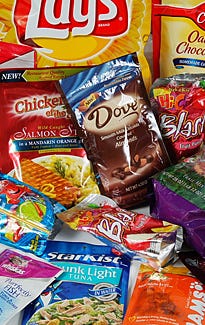Global Plastics Issue: Packaging materials, machinery outlook
Driven by growth in emerging markets, a new report estimates that the global rigid plastic packaging market will reach a value of $161.11 billion in 2013.The report, by Visiongain, said emerging markets will be characterized by clear immaturity and strong economic growth, which will increase the quality and quantity of consumer purchases. In addition, low labor costs will also provide an incentive for companies to expand the scale of their operations in these markets.
December 19, 2013
Driven by growth in emerging markets, a new report estimates that the global rigid plastic packaging market will reach a value of $161.11 billion in 2013.
The report, by Visiongain, said emerging markets will be characterized by clear immaturity and strong economic growth, which will increase the quality and quantity of consumer purchases. In addition, low labor costs will also provide an incentive for companies to expand the scale of their operations in these markets.
While the effects of the economic crisis are still felt throughout the entire supply chain, Visiongain said that the conditions the crisis has created have actually proved favorable to the growth of rigid plastic packaging.
As a consequence of the economic crisis, 
there has been a change in consumer preferenc
es and this has been reflected in purchasing patterns. Consumers want convenience, and they are looking for good quality products at an affordable price, according to the report.
There are also demographic trends that have positively affected growth in the rigid plastic packaging market. An aging population, for example, has stimulated demand for packaging with greater visual appeal and ease of use, with rigid plastic packaging proven effective in addressing this demand.
"The economic crisis has also led to more people staying at home and increasing their consumption in the household," the report stated. "This has increased the need for packaged products and has helped galvanize demand in the rigid plastic packaging market."
 Last year, Visiongain's analysis indicated that the global flexible (converted) plastic packaging market would reach a value of $137 billion in 2012, as the trend of convenience and low cost drove the global flexible (converted) plastic packaging market.
Last year, Visiongain's analysis indicated that the global flexible (converted) plastic packaging market would reach a value of $137 billion in 2012, as the trend of convenience and low cost drove the global flexible (converted) plastic packaging market.
The flexible plastic packaging market will record strong growth over the next decade, with a significant portion of that growth derived from the emerging markets. This will be, in part, due to rising disposable incomes as a consequence of stronger economic growth. Multinationals in the developed markets are expected to shift their strategies to the high growth developing markets, and the developed markets will be characterized by consolidation.
 The Visiongain author commented that, "Globally, consumers are demanding convenience when making purchasing decisions and the versatility of flexible plastic packaging has provided a way to satisfy this demand. On the other hand, the developed nations will be characterized by declining demand and this will be, in part, due to the devastating effects of the recession. Consumers have lower disposable incomes and overall packaging demand is expected to decline. With that said, the decline in packaging demand in flexible plastic packaging will not be as significant as in some of the other materials, such as glass, since flexible plastic packaging is perceived as being more cost effective."
U.S outlook for plastic film
U.S. demand for plastic film is expected to grow 1.9% annually to 16 billion lb in 2016, with a market value of $19 billion, according to The Freedonia Group. Expansion of the market will be fostered by an acceleration in economic growth and an increase in consumer spending, which will drive demand for film used in diverse applications such as retail sales, manufacturing, and construction.
Advances will also be helped by an increase in the use of film in packaging, where it offers advantages in cost, performance, and source reduction over other packaging materials. The versatility of plastic film increasingly allows for the downgauging of packaging, reducing the amount of material needed and lowering production and shipping costs, while maintaining desired characteristics.
Although this expands the presence of plastic film in the market, it also reduces the volume of film needed, limiting growth.
Linear low density polyethylene (LLDPE) will remain the most widely used film, representing almost 50% of demand in 2016. Demand for LLDPE film is forecast to register strong advances through 2016. Due to its relatively low cost and versatility, LLDPE will see gains in diverse markets such as packaging for snack foods and produce, medical and pharmaceutical products, and stretch and shrink wraps. Conventional low density polyethylene (LDPE) will grow at a slower pace as it is supplanted by better performing LLDPE in many applications.
High density polyethylene (HDPE) is expected to grow at an above average pace through 2016. Although constrained by slow growth in applications such as retail bags, HDPE film will gain in packaging for snack foods, baked goods, and grain mill products.
Demand for polypropylene film will also be above average through the forecast period, with packaging for snack foods, baked goods, and grain mill products
the leading applications.
Polyethylene terephthal
ate (PET) film demand will remain essentially unchanged, with increases in packaging demand for snack foods, dairy products, and frozen food offset by the continued decline in photographic and magnetic film.
Polyvinyl chloride (PVC) film demand is expected to grow at a below average rate through 2016, primarily
due to packaging for medical products and shrink wrap applications. Degrad- able plastic film will experience the fast- est growth at more than 10% per year through 2016, driven by efforts to devel- op more sustainable and environmentally friendly products.
Plastic film demand in nonfood packaging is forecast to grow at the fastest rate of all film markets, driven by packaging for medical products and pharmaceuticals needed to care for an aging population.
Solid growth is also expected for food packaging with the fastest gains
in weight saving pouches for beverages, packaging for frozen foods and confections, and packages designed to extend the shelf life of produce and dairy. Nonpackaging applications will expand at a slightly below average rate, limited by slow growth in trash bags and other applications such as disposable diapers. Growth in secondary packaging will also be below average, constrained by efforts to reduce or eliminate the use of plastic retail bags.
World plastics processing machinery outlook
A general study reviewing the entire plastics processing machinery market stated that global demand is projected 
to rise 6% yearly through 2015 to
 $28.7 billion, an improvement over market growth during the recession impacted 2005-2010 period, according to ReportsnReports. Sales growth will
 be driven by an acceleration in plastic manufacturing output and by a favorable fixed investment environment worldwide. In addition, rising income levels, especially in developing nations, will spur demand for both plastic products and plastic packaging, the report stated.
Another study, this time from Visiongain, determined that the value of the overall global packaging machinery market in 2013 will reach $152.76 billion.
About the Author(s)
You May Also Like


